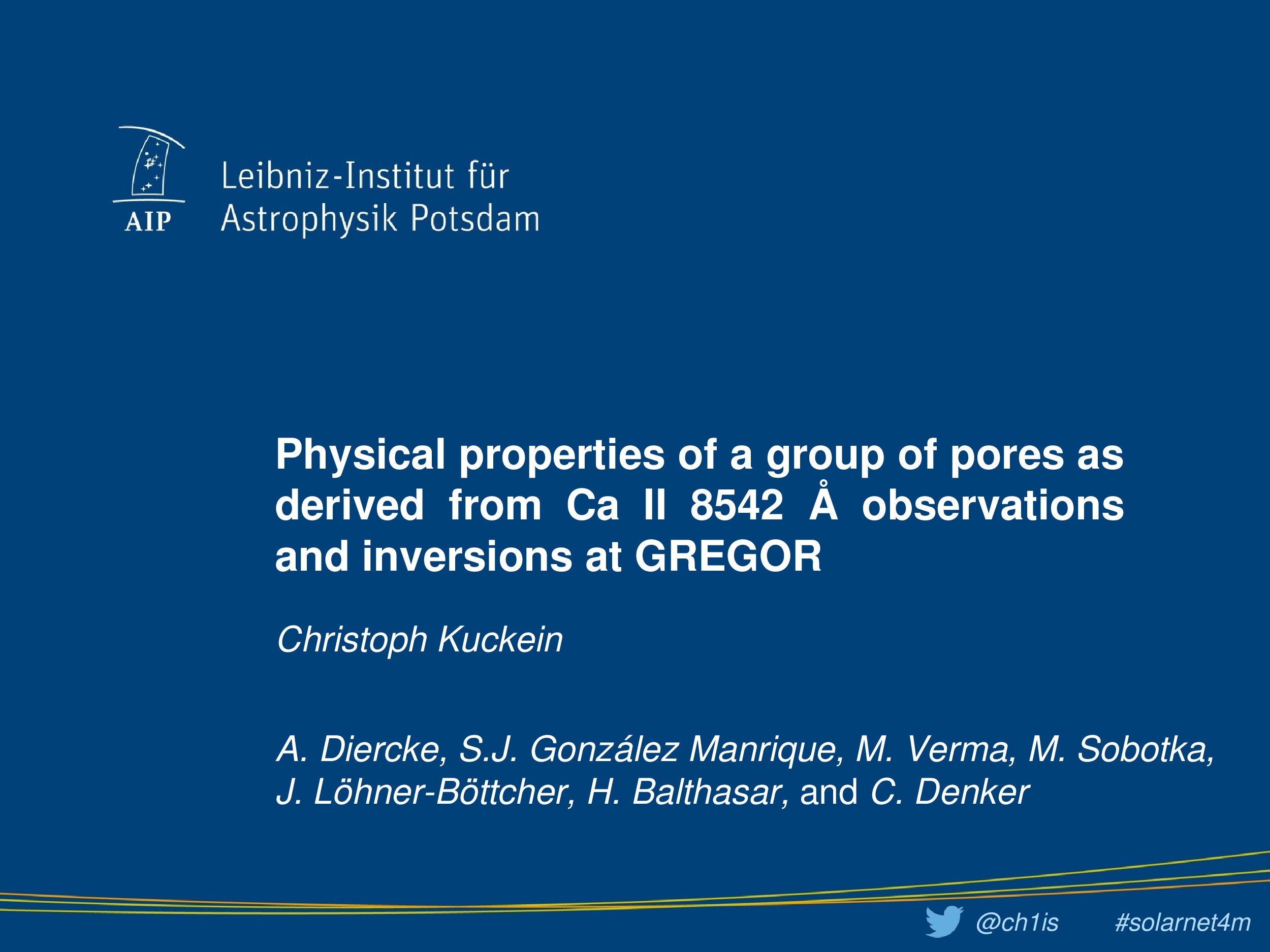Physical properties of a group of pores as derived from Ca II 8542 Å observations and inversions at GREGOR
Affiliation
Leibniz-Institut für Astrophysik Potsdam
Main category
Natural Sciences (Astrophysics and Astrononmy)
Abstract
The GREGOR Fabry-Perot Interferometer (GFPI) is installed at the 1.5-meter GREGOR telescope on Tenerife, Spain. The coatings of the etalons of the GFPI have a high reflectivity in the wavelength range between 530-860 nm. Therefore, during a 50-day first-science campaign in 2014 the chromospheric Ca II 854.2
nm line was observed with the GFPI in spectroscopic mode. The target was a group of pores close to disk center in active region NOAA 12149 on 2014 August 26. A non-equidistant wavelength spacing to scan through the broad Ca II 854.2 nm line was used. Narrower step sizes were taken close to the line core. Each of the 20 scans comprised 36 steps. Four images with an exposure time of 80 ms were acquired per step. We will present some physical properties of the group of pores derived from the inversions of the Ca II 854.2 nm intensity profiles using the non-LTE radiative transfer code NICOLE. This code is especially useful to infer
atmospheric parameters from chromospheric lines formed under non-LTE conditions.
Do you have problems viewing the pdf-file? Download presentation
here
If the presentation contains inappropriate content, please
report the presentation. You will be redirected to the landing page.
